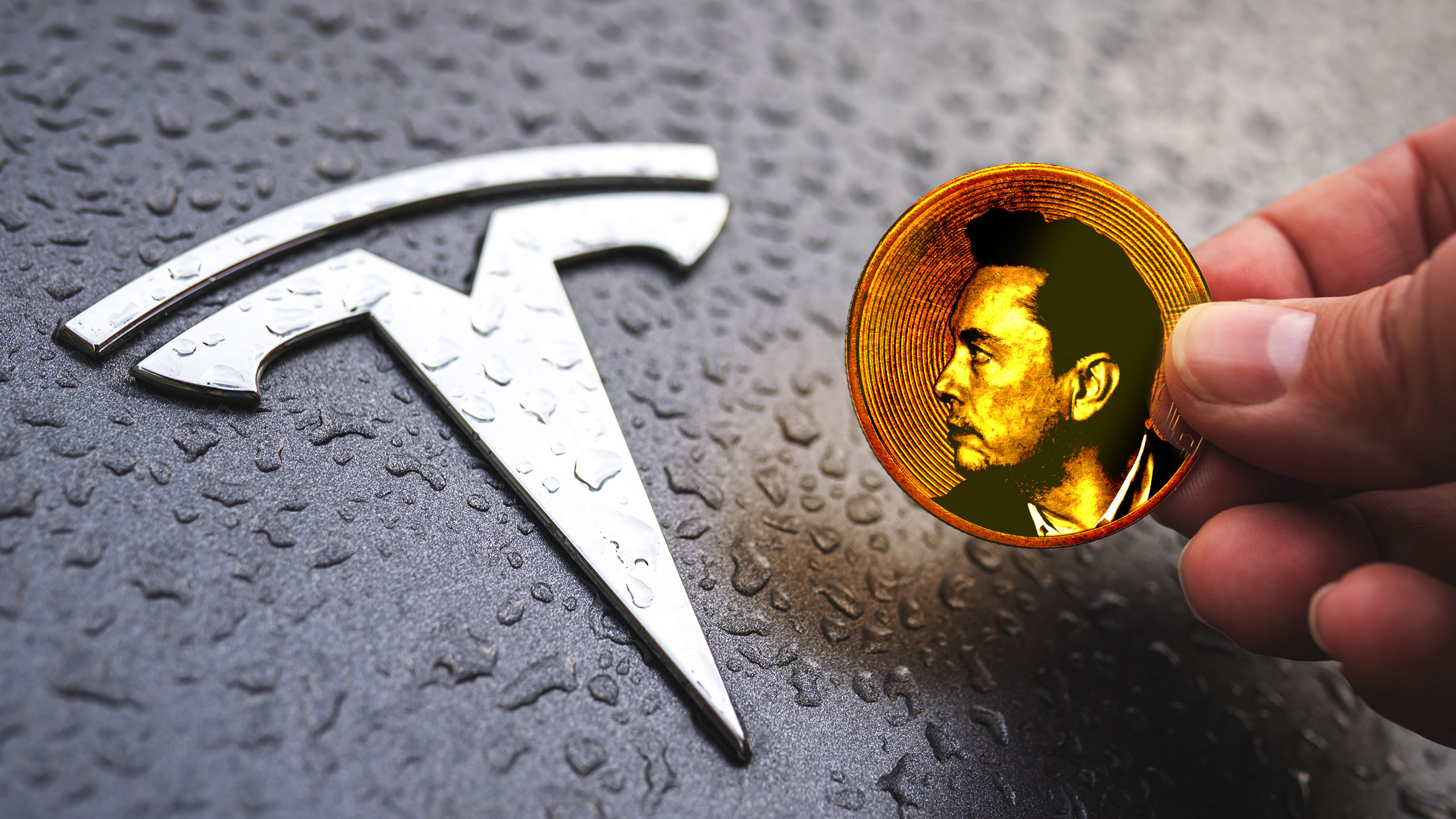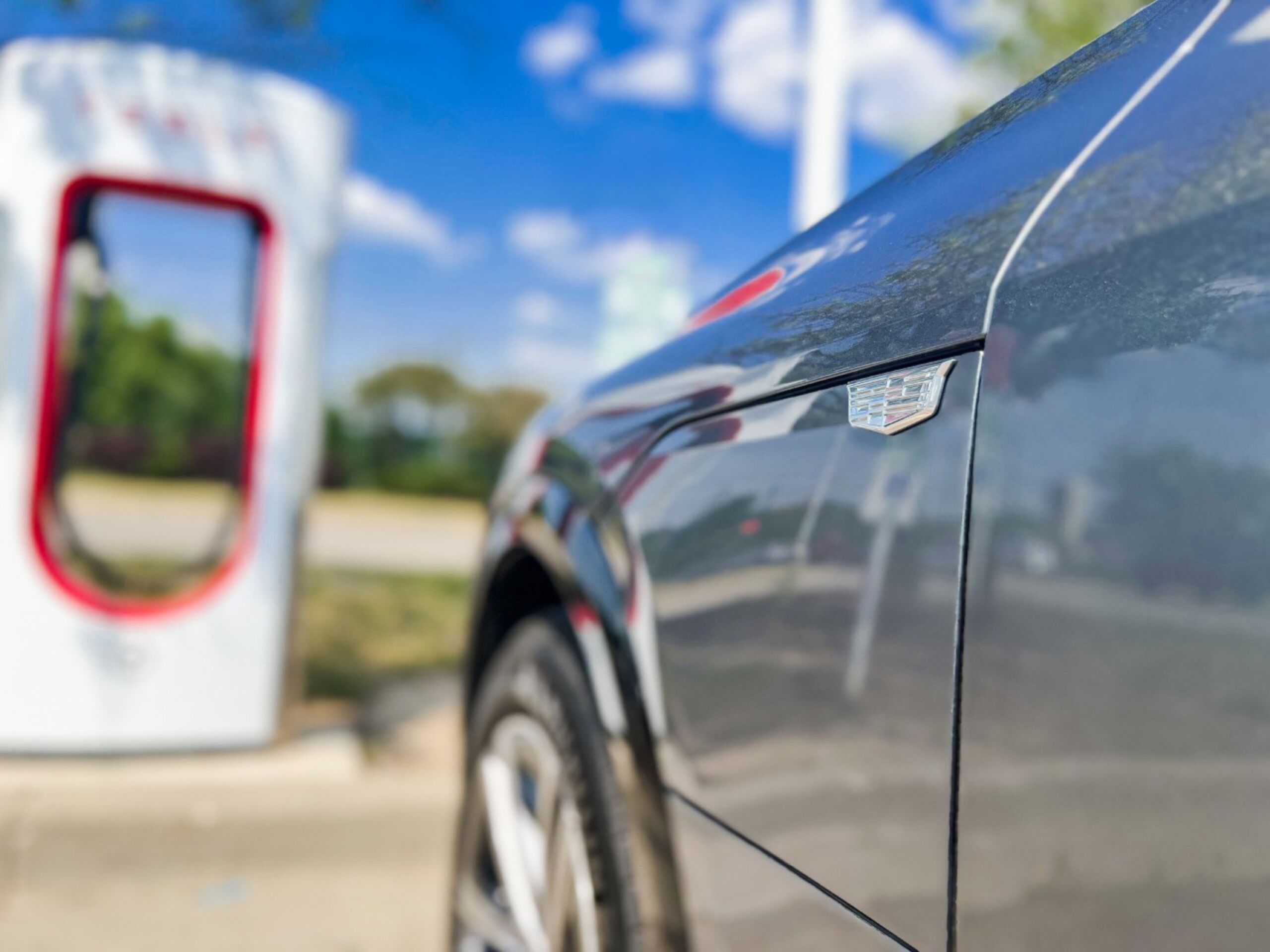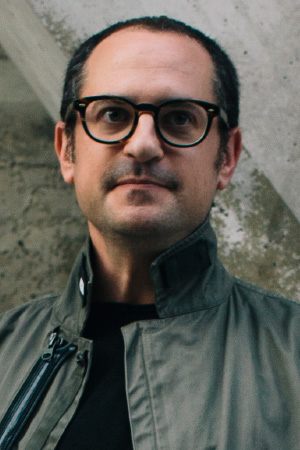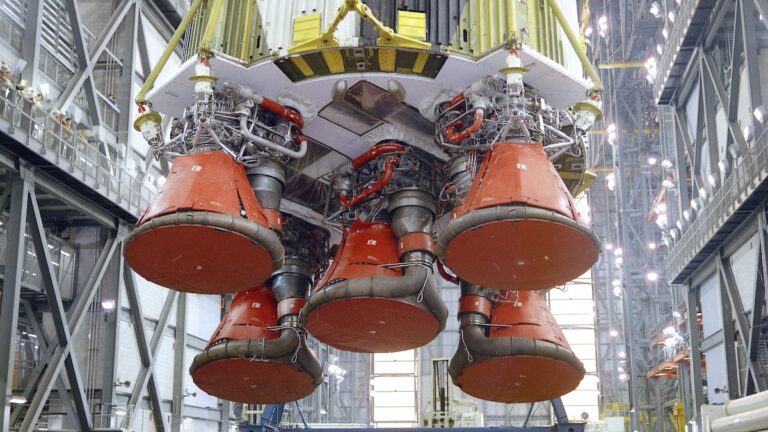Can things be turned around at Tesla, or is this the beginning of the end?
Credit: Aurich Lawson | Getty Images | Beata Zawrzel
No car company in recent years has been able to generate more news headlines than Tesla. Its original founders were among the very first to realize that lithium-ion laptop cells were just about good enough to power a car, assuming you put enough of them in a pack, and with critical funding from current CEO Elon Musk, the company was able to kick-start an electric vehicle revolution. But those headlines of late have been painting a picture of a company in chaos. Sales are down, the cars are barely profitable, and now the CEO is culling vast swaths of the company. Just what is going on?
Tesla had some good times
Always erratic, Musk’s leadership has nevertheless seen the company sell electric cars in volume, profitably. What’s more, Musk has at times been able to inspire faith in and devotion to his company’s products in a way that makes the late Steve Jobs look like a neophyte—after the Model 3 debuted in 2016, 450,000 people gave $1,000 deposits to Tesla for a product that wouldn’t go into production for at least 18 months.
Of course, that example also illustrates a long-running concern with the company and Musk’s investment-attracting pitches: overhyping and underdelivering. By 2018, more than one in five reservation holders wanted a refund after cheaper models were delayed and delayed.
But things have been on a bit of a downward slide recently. After having the long-range EV market almost to itself for some years, there’s now stiff competition from car companies in the US, Europe, and China. That has caused Tesla to engage in a prolonged series of price cuts that have seen the company’s profit margin—once the envy of the industry—reduced to a measly 5.5 percent. (The average automaker profit margin last year was 8.9 percent.)
Tesla has tried to stave off that decline by making its cars cheaper to build. Where possible, the company has stripped content from cars to reduce the cost of putting them together. Some of that is merely annoying to the driver; turn signals that were stalks are now capacitive buttons on the steering wheel. Some is more serious. Tesla has abandoned the radar and ultrasonic sensors that everyone else trying to build partially automated cars, let alone fully autonomous ones, think are necessary. Instead, the company is relying on optical cameras alone. And that has caught up with it—both of Tesla’s driver assists have been the subject of recalls after numerous crashes and at least 13 deaths.
It feels like the company just crashed into a parked fire truck
But this week has been a weird one, even for experienced Tesla watchers. On Monday, Musk swung the corporate ax again, just a few weeks after laying off more than 10 percent of his workforce. The executive responsible for overseeing the company’s crown jewel—the Supercharger network—and all of her 500-odd staff were shown the door. Gone, too, was the man in charge of developing new vehicles, in addition to his team, at a time when Tesla is sorely in need of second-generation platforms for the Models 3 and Y.
Nothing has calmed down since then. “Gigacasting” has been a much-hyped idea to cut costs even further by using massive single-piece castings for the car’s entire underbody, but according to Reuters, that idea is not happening anymore. (At least it will be good news for repairability since a damaged gigacasting will likely make a car a write-off.)
Tesla is also already pulling back on Supercharger sites. Inside EVs learned that at least four planned sites in New York City are off, though Musk did post to his followers to say that Tesla will still grow the network “at a slower pace” and with more focus on uptime.
The company has now parted ways with its head of HR, and insiders say that some of the layoffs “have nothing to do with hiring inefficiencies or restructuring but rather with Musk throwing his weight around Tesla,” according to Electrek.
Does anyone know what’s going on?
I spoke with experts across the industry to see if they were any less confused than I am about this whole situation.
“The recent strategic and organizational changes at Tesla are at once shocking but unsurprising. One could trace a straight line from earlier pivots to what’s going on now. However, it remains difficult to predict where Tesla will disrupt itself,” said Tyson Jominy, VP of data and analytics at J.D. Power. “Questioning every cost and breaking things to see what happens is a core Tesla attribute instilled by Mr. Musk. To wit, Tesla is the automaker without a PR team. Ninety percent of Twitter was laid off after Mr Musk’s acquisition. The philosophy is to cut until something breaks and then add back investment where the cracks emerged.”
I’ve been skeptical that a mild cosmetic refresh to the Model 3 will suffice in place of an entirely redesigned version, but Jominy thinks that applying the same tweaks to the Model Y crossover should keep both models looking fresh.
Robby Degraff, manager of product and consumer insights at AutoPacific, agrees with Jominy. “The updated Model 3 is a winner, and I hope that same degree of attention is gifted to the Model Y ASAP if Tesla wants to revive its sales numbers,” Degraff said.
But that will require the boss to not get distracted again. Consumers want a cheap EV, not an expensive pickup.
“Cost sensitivity is also a major concern among EV buyers. Our research shows that if an EV cost under $35,000, the majority of EV ‘rejectors’ would consider buying one,” Degraff told me. “I think Tesla’s prioritization needs to be kept in check. The Cybertruck, as much of a showstopper as it is, likely wasn’t the smartest move product-wise, especially given that among all vehicle segments, demand is lowest for pickup trucks among EV shoppers. Launching a pricey pickup truck before an overdue facelift of the brand’s bestselling Model Y and a true entry-level EV was puzzling.”
How worried should we be about Superchargers?
A recent macro EV trend in the US has been the rest of the industry coalescing around Tesla’s plug design. Once called the North American Charging Standard, it’s now “J3400” and is administered by SAE International, so the standard is safe. But gutting the team that put together all those deals must surely have all the other OEMs worried about what’s in store for them.
“I do think there’s potential for added revenue by allowing EVs from other makes to tap into Tesla’s Supercharger network, and Tesla would be wise to continue pursuing that, especially as sales of EVs begin to slow,” Degraff told me. “Remember, even if the take rate isn’t as high for new EVs among prospective buyers, current EV owners, Tesla and non-Tesla, still need to charge.
“It’s honestly hard to tell at this point if any automaker will reverse course on integrating NACS ports into their future EVs. We may see some back out, but I think it’s imperative to note that Tesla still has the dominant hand,” Degraff continued. Public charging outside of the Tesla ecosystem already has a poor reputation, and it’s important for EV adoption that the addition of many more EVs from a whole lot more OEMs goes as smoothly as possible.
This year, non-Tesla EVs like this Cadillac Lyriq will be able to use Tesla Superchargers.
Credit: General Motors
This year, non-Tesla EVs like this Cadillac Lyriq will be able to use Tesla Superchargers. Credit: General Motors
“Opening the Supercharger network will definitely add to Tesla’s top-line revenue,” said Sam Abuelsamid, principal analyst of transportation and mobility at Guidehouse Insights. “Whether it is profitable revenue is hard to say for sure; the prices they charge aren’t cheap and can be upward of $0.50/kWh ,so presumably, they are at least breaking even, if not profitable, on variable cost of electricity.”
More than just a profit line, “there is another crucial reason for opening the Supercharger network, NEVI,” said Abuelsamid, referring to the $5 billion for high-speed EV charging allocated by the Biden administration. “Tesla has always thrived on subsidies. To be eligible for NEVI funding that pays for much of the cost of installing DC fast charging, the chargers must be open to all users, not just a specific brand. That’s exactly why Rivian is opening up its adventure charging,” Abuelsamid told me.
There’s a chance that scaling back on charging won’t hurt Tesla that much. “EV charging in the US remains a growth field, but with the rest of the industry pivoting to Tesla’s own charging standard, why does Tesla’s charging team need to be so big, or even exist?” Jominy asked. “I’m not positive of the reciprocity agreements in adopting NACS, but if you’re an automaker like Rivian with its own fledging charging network that has gained access to the Supercharger network, your owners now have more high-speed charging access than Tesla owners. How does Tesla win by continuing to play in that game?
“Charging is a massive capital investment. From here, future investments are about filling in white space on the charging map,” Jominy said. “It’s like most major cities have an Ikea. Does it take a massive team to determine what cities next need one or if a large city needs a second? Those are innocuous decisions relative to the crucial ones during the initial rollout strategy. Each incremental investment in Superchargers from here produces marginal gains at best, and where to place future bets becomes increasingly obvious by looking at a map or owner statistics.”
“I don’t know if it’s something where Elon just doesn’t care about charging anymore. Like, he can just say, ‘whatever’ and take the hit on it and just miss out on future subsidies,” author Ed Niedermeyer said. “I think that’s a risk. The weird thing about all this is why is he not spinning this out? Why isn’t he selling this?”
Should Musk stay in charge?
A question I’m increasingly seeing in Ars comments and on social media is whether Tesla could ever be a normal car company, perhaps if it were run by someone more… normal.
“It’s not clear that another person could run Tesla, at least not in the manner that Mr. Musk does,” said Jominy. “Tesla could assimilate into the automotive sphere with another CEO, have a fully developed product roadmap, but the margins, growth, and therefore stock price, of an automaker are much lower than Tesla’s. If another CEO is instilled, then the latest bet on a pivot to AI will have failed.”
Abuelsamid, on the other hand, thinks it’s long past time for Tesla’s board of directors to show Musk the door. “In retrospect, that might not have been the best thing for the company in the late 2010s, simply because the key to the company’s survival was the ability to raise free capital seemingly by selling more shares whenever it was running out of money,” he said. “That might not have been possible in Elon’s absence because the people buying and pumping the shares were part of a cult of personality buying into Elon’s mostly fanciful narratives about solar roofs and autonomy.”
“However, in 2024, I do believe it’s well past time to Elon to step aside. The lack of focus on the core business is hurting the company’s long-term prospects, especially in China, where there is a huge amount of competition, and those companies are redesigning products every two years,” Abuelsamid said.
“A change of leadership wouldn’t be a guarantee to fix anything, especially if Elon can’t keep himself from interfering, but bringing in fresh leadership could help,” Abuelsamid continued. “Ideally, a new leader could start to change the corporate culture, especially in the factories, put more emphasis on safety both in manufacturing and the products, and improve quality. Tesla has many strengths in terms of software development, vehicle architecture, and charging, and focusing on the fundamentals would go a long way to make the most of those strengths. Also, rebranding AutoPilot/FSD and abandoning the camera-only robotaxi fantasy and robots would be other changes that should be made.”
Just don’t expect it to happen. “Unfortunately, Tesla has effectively no corporate governance from its board full of Musk cronies, and he will never acknowledge when he has made a mistake and will thus not step aside,” Abuelsamid said.
Car companies go bankrupt—lots of them
Considering Musk isn’t likely to leave Tesla willingly, nor is he likely to be pushed, it’s probable that the chaos will continue. The history of American car manufacturing is littered with companies that thought they could make it but didn’t—could Tesla join the ranks of Tucker and DeLorean?
Car companies “go bankrupt because A, they overinvest in factories, and then demand falls off. Which… that fits the profile,” said Niedermeyer. “And B, they don’t invest in products. Not investing in products is sort of a longer-term cause, and the proximal cause is [that] demand falls, and you’ve been investing in too many factories, and you get crushed by those fixed costs. So those cases that are common across most auto industry bankruptcies are certainly there.”
But with almost $27 billion of cash on hand, that shouldn’t happen any time soon. “The thing that is really hard to understand is that if you have tens of billions of dollars in cash but you’re losing market share and you’re losing margin, losing pricing power, and all the other things that are happening with the business—you don’t cut your way out of that problem,” Niedermeyer continued. “That’s the confusing part about all this. What would you use that cash for if not to solve those problems? And yet, instead, they’re cutting.
“One of the things I’ve said for a really long time, and I think this is what’s happening, is that an automaker is not really real until they survived a serious downturn,” Niedermeyer said. And while the broader economy looks fine, EV sales are battling a strong negative headwind. “The car game is a survival business. You can capture more upside than the other guy in the good times. And that can be really good for your stock. But if you do that by not investing in the things that protect you in the downturn, it doesn’t matter. And you’re just another one on the list of defunct automakers,” Niedermeyer told Ars.
Any ideas why?
Only Elon Musk truly knows why he makes the decisions he does. But I did get a couple of theories from the experts.
“What we’re seeing is what happens when you’ve won in every area in which you’ve competed,” said Jominy. “Tesla won in charging, so why continue to invest? They won with vehicles, so why continue to invest? They caused every automaker to rip up product development plans to compete in EVs, only to find the going so tough that most have retreated back to their core strengths (and profits) of ICE vehicles. Tesla investors are demanding growth to justify share prices, and that isn’t going to come from what has gotten them here,” he added.
So it’s about the boredom of victory and a pivot to AI to keep the stock price in the stratosphere for as long as possible? Niedermeyer found that plausible, too. But he could think of another possible problem that could have precipitated all of this.
“The scenario there is if the government is really serious about Autopilot, and frankly, I don’t remember the last time NHTSA investigated the efficacy of a recall remedy… he knows that NHTSA is insisting on a hardware fix for Autopilot and FSD,” Niedermeyer said, referencing the auto safety regulator’s unusual decision to apply extra scrutiny to Tesla’s 2-million-car safety recall, announced last week.
With 2 million affected cars on the road, any fix that requires hardware—adding back radar, perhaps, or infrared gaze-tracking driver monitoring, wouldn’t be cheap or quick to complete. “If NHTSA demands a level of remedy to problems that can’t simply be done affordably… then it’s a negative margin business with no way out. And that’s a problem you can’t just spend your way out of,” Niedermeyer said.
Listing image: Aurich Lawson | Getty Images | Beata Zawrzel
Jonathan is the Automotive Editor at Ars Technica. He has a BSc and PhD in Pharmacology. In 2014 he decided to indulge his lifelong passion for the car by leaving the National Human Genome Research Institute and launching Ars Technica's automotive coverage. He lives in Washington, DC.



